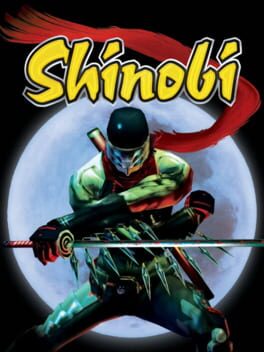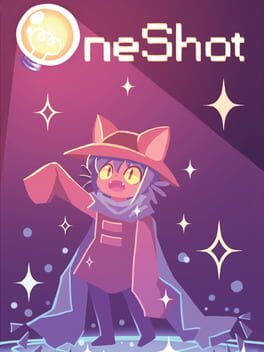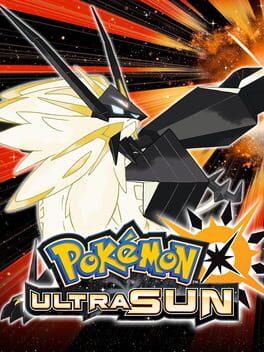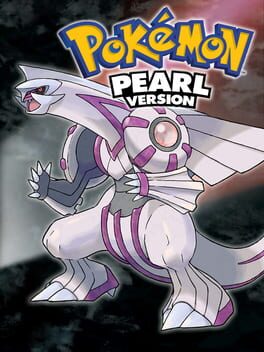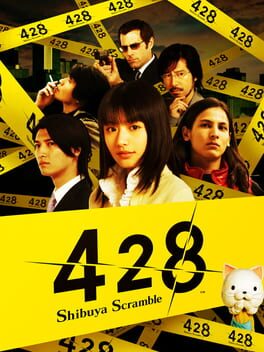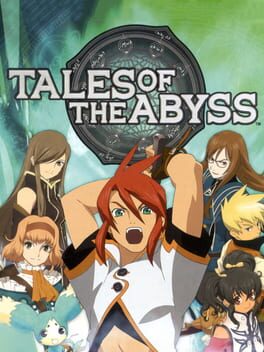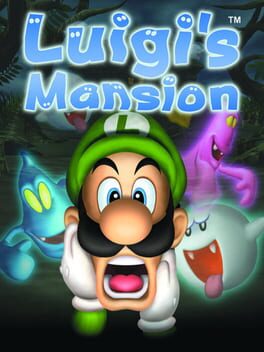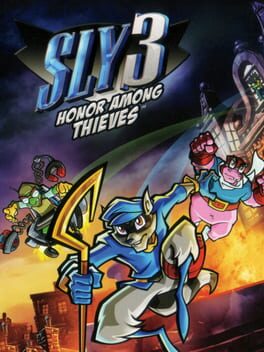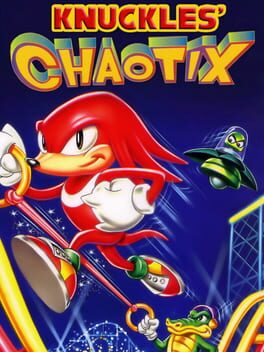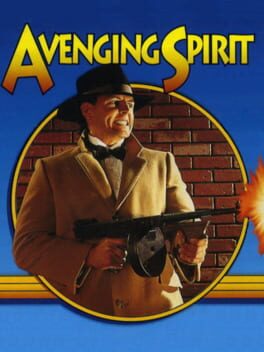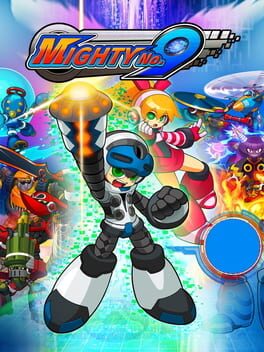SunlitSonata
2001
2002
2016
2017
The Ultra Necromza fight genuinely owns, but there's not enough differences to make it feel like you're playing a new game; it's basically the same but with slightly more endgame and massively undermining the plot of the original Sun/Moon game. Unfortunately set the tone for Sword and Shield to follow.
2005
Excellently developed protagonist, strong story with a great thematic thrust, a compelling cast of villains that serve as complimentary rivals..............................................................................
All that compounded by a tedious, boring, backtrack loaded emptily designed game. There's so little to sink into with the combat systems on offer and most of the dungeons are just walking from entrance to exit or putting colored balls in the right holes. Maybe there was one good puzzle but I don't know if it was required or not. There's an overly long segment which just consists of your party split in half walking across the map from location to location and having to forcibly stop for a cutscene if you're doing it too long. It's atrocious. The game also feels optimized poorly for PS2. Merely saving the game takes a solid 7-10 seconds, and trying to move the camera in the overworld results in a ton of lag. But the story kept me interested enough to see it to the end, and for what it's worth, the final dungeon delivers as it should.
Great story but it feels especially rough to experience all of it.
All that compounded by a tedious, boring, backtrack loaded emptily designed game. There's so little to sink into with the combat systems on offer and most of the dungeons are just walking from entrance to exit or putting colored balls in the right holes. Maybe there was one good puzzle but I don't know if it was required or not. There's an overly long segment which just consists of your party split in half walking across the map from location to location and having to forcibly stop for a cutscene if you're doing it too long. It's atrocious. The game also feels optimized poorly for PS2. Merely saving the game takes a solid 7-10 seconds, and trying to move the camera in the overworld results in a ton of lag. But the story kept me interested enough to see it to the end, and for what it's worth, the final dungeon delivers as it should.
Great story but it feels especially rough to experience all of it.
2001
Filled to the brim with charm and strong demonstration of the GameCube’s power. Pretty good. There’s a lot to love about the atmosphere of the game (particularly in boss fights), the animations/lighting, Luigi humming the theme tune whenever you walk about, distinctness of each portrait ghost with their respective rooms and puzzle, etc.
It’s held back, for me, by the inconsistency of its core vacuuming controls. The game’s very loose with what the best way for catching them is between tilting or holding the control stick, which leads to some frustration where it feels like you’re barely having any effect and you’re starting at the screen and not your two controller sticks. It’s hard to say the control really works with you, which makes a lot of the portraits feel like a slog or hard to get a start on. That, plus some camera issues in a few places and inconsistency in starting the suction for portrait ghosts in the split second holds the game back.
It’s no REmake 1 for me, but it’s still quite good, a great launch title and I admire 2001 Nintendo plenty for taking on such a novel concept that eventually led to two sequels years later.
It’s held back, for me, by the inconsistency of its core vacuuming controls. The game’s very loose with what the best way for catching them is between tilting or holding the control stick, which leads to some frustration where it feels like you’re barely having any effect and you’re starting at the screen and not your two controller sticks. It’s hard to say the control really works with you, which makes a lot of the portraits feel like a slog or hard to get a start on. That, plus some camera issues in a few places and inconsistency in starting the suction for portrait ghosts in the split second holds the game back.
It’s no REmake 1 for me, but it’s still quite good, a great launch title and I admire 2001 Nintendo plenty for taking on such a novel concept that eventually led to two sequels years later.
Return of the Jedi for sandbox games starring talking animals. It's a game full of selective improvements, like the more maneuverable hub worlds, despite the lack of stuff to find in them and absurdly high coin counts. There's slightly better boss fights, and more characters to break up the gameplay, some of which are interesting shake ups and others feel like wasted development with little use. The pirate ship stage in particular is a massive annoyance. In line with RotJ, the final stretch is amazing, an excellent culmination of the entire series up to that point; if only the series ended here...
Impressively and gallingly bad almost immediately. I bought this for $3 and still felt like it wasn't worth it. It got mixed reviews so I wasn't expecting the world but I was expecting better than abject misery.
Shiness feels like "jack of all trades, master of none." What would happen if you got 3 different artistic styles and game design documents together? There's a mix between animesque furry characters, western inspired fury characters, anime people and realistic people. The art design isn't very cohesive at all, despite the comic book cutscenes looking impressive.
As an RPG, the material gathering isn't fun and the (non-mappable) menus are more confusing than anything else. You can't fast travel anywhere. Plot wise, I can barely buy why the leads are friends, the world is generic and the music is instantly forgettable.
As a fighting game, the animations lack any sort of weight or impact, with many battles dragging on for overly long against damage sponge enemies. The camera, even with the option to autolock, very frequently gets caught on grass or terrain rather than stick to the enemies.
As a platform adventure game, it's incredibly clunky, with only a single heavy jump and incredibly slow movement despite having a dash.
It aimed for Indivisible but came out Sonic Boom Rise of Lyric.
Shiness feels like "jack of all trades, master of none." What would happen if you got 3 different artistic styles and game design documents together? There's a mix between animesque furry characters, western inspired fury characters, anime people and realistic people. The art design isn't very cohesive at all, despite the comic book cutscenes looking impressive.
As an RPG, the material gathering isn't fun and the (non-mappable) menus are more confusing than anything else. You can't fast travel anywhere. Plot wise, I can barely buy why the leads are friends, the world is generic and the music is instantly forgettable.
As a fighting game, the animations lack any sort of weight or impact, with many battles dragging on for overly long against damage sponge enemies. The camera, even with the option to autolock, very frequently gets caught on grass or terrain rather than stick to the enemies.
As a platform adventure game, it's incredibly clunky, with only a single heavy jump and incredibly slow movement despite having a dash.
It aimed for Indivisible but came out Sonic Boom Rise of Lyric.
2005
I'm sort of at a crossroads when it comes to this game. On the one hand, the initial confusion regarding the controls, the incredibly bizarre gameplay feel, the insane puzzle of plot, obvious lock and key approach to gameplay puzzles, and the shitty boss fights do drag the game down to a degree and make it difficult to recommend to those not willing to tame it.
But on the other hand, I've rarely seen a game that felt more specified on a craft level. Killer7 is a weird, weird game, yet all its mechanics and plot beats work toward its intent. Each of your 7 characters have a distinct feel in terms of their gameplay and the proper use for them, while the forgiving death system and brief spurts of anime cutscenes add to the style in their own way. You're constantly left surprised by killer7, sometimes confused and sometimes in awe, but I was compelled to keep going in it all throughout for how well its style coats it in exploring what a game can be capable of in piecing together this information. The final (real) chapter of gameplay in particular has such a tone to it, helped along by great tone setting music and truly sublime sound design.
It's a game I admire more than love, but nonetheless find it a remarkable craft that every piece could arrange itself in such a way.
But on the other hand, I've rarely seen a game that felt more specified on a craft level. Killer7 is a weird, weird game, yet all its mechanics and plot beats work toward its intent. Each of your 7 characters have a distinct feel in terms of their gameplay and the proper use for them, while the forgiving death system and brief spurts of anime cutscenes add to the style in their own way. You're constantly left surprised by killer7, sometimes confused and sometimes in awe, but I was compelled to keep going in it all throughout for how well its style coats it in exploring what a game can be capable of in piecing together this information. The final (real) chapter of gameplay in particular has such a tone to it, helped along by great tone setting music and truly sublime sound design.
It's a game I admire more than love, but nonetheless find it a remarkable craft that every piece could arrange itself in such a way.
1995
God, Knuckles' Chaotix is such a frustrating game to think about because for every part of it that it gets right, there's at least one other thing it gets wrong, and some of those elements weigh against it even more than similarly middling Sonic titles like Heroes or Lost World.
To start with the good, the sprites in this game are fantastic. For all of the characters introduced, the animation gives them incredibly distinct character. Tons of expression, Vector in particular looks great. Knuckles and the four Chaotix members each have some sort of unique quirk to set them apart, and although Charmy breaks the game more than it already is, there's still some thought behind picking teammates. It's got a great amount of color behind it, dazzling more than what was possible on the Genesis, and some of the soundtrack is pretty solid too, particularly Labyrinth and Door to Summer.
Special stages are back to the Sonic 1 method of access, and despite depth perception issues, they're the most interesting part of the game, collecting small spheres over tube layouts and being able to lap if you miss the required amount. There's different pathways to this with associated risk/reward, not seen in a special stage until Mania 22 years later.
The tether mechanic is interesting, in theory. When running whilst pressing the hold button at just the right time, it can give you a great burst of exciting speed. One partner being above and one being below while holding the button and letting go can also lead to exciting whiplash as you zip through the sky.
Leading into the negatives though, the tether can occasionally be untenable, hard to get working in the right position, or not being able to properly build up speed to reach the top of a steep hill. In levels where you need to get vertical and there's no wall to climb, calling this a pain is an understatement. And as if to accommodate the tether, level design is horrifically bland; barely any obstacles, enemies thrown in seemingly at random, and lots of vertical leading to slow climbs.
Most of the levels have obsolete gimmicks and shitty boss fights at the end of their 5 ACTS, but the one level that does have a gimmick, Amazing Arena, is the actual pits. Failing to reach one specific object, which can occasionally be sealed by points of no return, means that a level clear is invalid. GREAT. At least the collecting stuff in games like Heroes was in 3D!
Final boss is OK I guess. A bit basic, but has some scope to it.
Knuckles' Chaotix is debatably "the first bad Sonic game" and its existence alongside the failed 32X sent something of a bad omen in the years to come. It's got a lot of strengths undermined by the level designs they exist for.
To start with the good, the sprites in this game are fantastic. For all of the characters introduced, the animation gives them incredibly distinct character. Tons of expression, Vector in particular looks great. Knuckles and the four Chaotix members each have some sort of unique quirk to set them apart, and although Charmy breaks the game more than it already is, there's still some thought behind picking teammates. It's got a great amount of color behind it, dazzling more than what was possible on the Genesis, and some of the soundtrack is pretty solid too, particularly Labyrinth and Door to Summer.
Special stages are back to the Sonic 1 method of access, and despite depth perception issues, they're the most interesting part of the game, collecting small spheres over tube layouts and being able to lap if you miss the required amount. There's different pathways to this with associated risk/reward, not seen in a special stage until Mania 22 years later.
The tether mechanic is interesting, in theory. When running whilst pressing the hold button at just the right time, it can give you a great burst of exciting speed. One partner being above and one being below while holding the button and letting go can also lead to exciting whiplash as you zip through the sky.
Leading into the negatives though, the tether can occasionally be untenable, hard to get working in the right position, or not being able to properly build up speed to reach the top of a steep hill. In levels where you need to get vertical and there's no wall to climb, calling this a pain is an understatement. And as if to accommodate the tether, level design is horrifically bland; barely any obstacles, enemies thrown in seemingly at random, and lots of vertical leading to slow climbs.
Most of the levels have obsolete gimmicks and shitty boss fights at the end of their 5 ACTS, but the one level that does have a gimmick, Amazing Arena, is the actual pits. Failing to reach one specific object, which can occasionally be sealed by points of no return, means that a level clear is invalid. GREAT. At least the collecting stuff in games like Heroes was in 3D!
Final boss is OK I guess. A bit basic, but has some scope to it.
Knuckles' Chaotix is debatably "the first bad Sonic game" and its existence alongside the failed 32X sent something of a bad omen in the years to come. It's got a lot of strengths undermined by the level designs they exist for.
1992
A fairly underrated arcade game brought to the Game Boy. Even its brief cutscene interludes are pretty nicely rendered. Its difficulty is a bit too punishing, forcing you to repeat entire stages if you die at any point during them, but the stages themselves, despite their lack of real "theme" or memorable bosses, have a nice curve to them and don't go on for too long.
The key thing that sets this game apart for when it came out was its core possession mechanic.
Over a year before Kirby's Adventure, and 25 years before Super Mario Odyssey, this game has you play as a spirit with the power to possess enemies occupying the levels. You have two bars: a health bar and an energy bar. Both bars deplete to some extent as you take damage, but moreso the health bar, and when you lose all your health, you have a couple seconds to possess another enemy before your energy goes down. And there's quite a number of enemy characters to chose from. From gangsters, to fire breathing coyotes, to robots, to ninjas spinning nunchucks, shirtless floating men, what appear to be cat wizards and even warrior women, you get a lot to work with. Each enemy has different weapon range, movement speed, health and jumping physics, all fairly advanced modifications for its time. Inevitably you'll find which enemy best suits your playstyle and go to that, but it leads to a bit of risk/reward when you're low on health based on if you're close enough to an enemy in one place.
This isn't a game that'll blow your mind, but for what it is, it's a solid template for an enjoyable game concept.
The key thing that sets this game apart for when it came out was its core possession mechanic.
Over a year before Kirby's Adventure, and 25 years before Super Mario Odyssey, this game has you play as a spirit with the power to possess enemies occupying the levels. You have two bars: a health bar and an energy bar. Both bars deplete to some extent as you take damage, but moreso the health bar, and when you lose all your health, you have a couple seconds to possess another enemy before your energy goes down. And there's quite a number of enemy characters to chose from. From gangsters, to fire breathing coyotes, to robots, to ninjas spinning nunchucks, shirtless floating men, what appear to be cat wizards and even warrior women, you get a lot to work with. Each enemy has different weapon range, movement speed, health and jumping physics, all fairly advanced modifications for its time. Inevitably you'll find which enemy best suits your playstyle and go to that, but it leads to a bit of risk/reward when you're low on health based on if you're close enough to an enemy in one place.
This isn't a game that'll blow your mind, but for what it is, it's a solid template for an enjoyable game concept.
2003
There are a lot of things I could say about this game. The story is nonexistent, the camera constantly gets caught on things other than your character with inconsistent motion, the powerups are simultaneously clunky and incredibly underutilized and the voice acting sucks, but it's got some nice creativity in places; I like the giant's house level, there's a good amount of effort into filling each room with some new fun puzzle, and there's a couple satisfying platforming gauntlets with a good amount of challenge.
Really, it's the final boss that's the kick in the teeth. While a lot of the platforming elements are difficult, but manageable with enough grasp on the controls, every aspect that makes this final boss hard feels like fake difficulty. I genuinely would've given this game a 4 or 5 if the final boss wasn't so shit.
It's a multi-phase fight, with no checkpoints in between phases. Phase 1 is a mook storm where the method to succeed is spamming one attack over and over for three minutes, hopefully not sustaining any more damage. The mooks blend into the floor so it can be hard to see them as you're trying to spam this one attack. Then the boss turns into a giant spider. An absurdly fast giant spider that can jump all over the place and engage in inconsistent patterns. The spider can even animation cancel if you fudge a tiny hitbox window to reset its pattern. Even when hitting the spider, it does a massive lunge attack where the dodge for it was incredibly inconsistent. You have a maximum of three hits, and dying here sends you back to the mook spawning phase to go through all of that again just to try another shot at the spider form. It genuinely feels like he wasn't playtested because of how overclocked his animations seem.
That this alone made my opinion go from mehness to shittiness really goes to show the impact of a final boss, and how major a factor it can be in final determination of quality.
Really, it's the final boss that's the kick in the teeth. While a lot of the platforming elements are difficult, but manageable with enough grasp on the controls, every aspect that makes this final boss hard feels like fake difficulty. I genuinely would've given this game a 4 or 5 if the final boss wasn't so shit.
It's a multi-phase fight, with no checkpoints in between phases. Phase 1 is a mook storm where the method to succeed is spamming one attack over and over for three minutes, hopefully not sustaining any more damage. The mooks blend into the floor so it can be hard to see them as you're trying to spam this one attack. Then the boss turns into a giant spider. An absurdly fast giant spider that can jump all over the place and engage in inconsistent patterns. The spider can even animation cancel if you fudge a tiny hitbox window to reset its pattern. Even when hitting the spider, it does a massive lunge attack where the dodge for it was incredibly inconsistent. You have a maximum of three hits, and dying here sends you back to the mook spawning phase to go through all of that again just to try another shot at the spider form. It genuinely feels like he wasn't playtested because of how overclocked his animations seem.
That this alone made my opinion go from mehness to shittiness really goes to show the impact of a final boss, and how major a factor it can be in final determination of quality.
2016
For all of the presentational deficiencies, bad writing/voice acting, boring music, poor exclamation of its mechanics, and incredibly cheap difficulty spikes, the game might’ve been salvaged if the core mechanics felt good to play, but they really really don’t. Feels like they regressed all the way back to Mega Man 1 design wise. Thankfully this game’s colossal dumpster fire resulting in bringing actual Mega Man back from the grave, but even beyond the mismanaged Kickstarter it really shouldn’t feel like innumerable steps back were taken from ANY Mega Man

